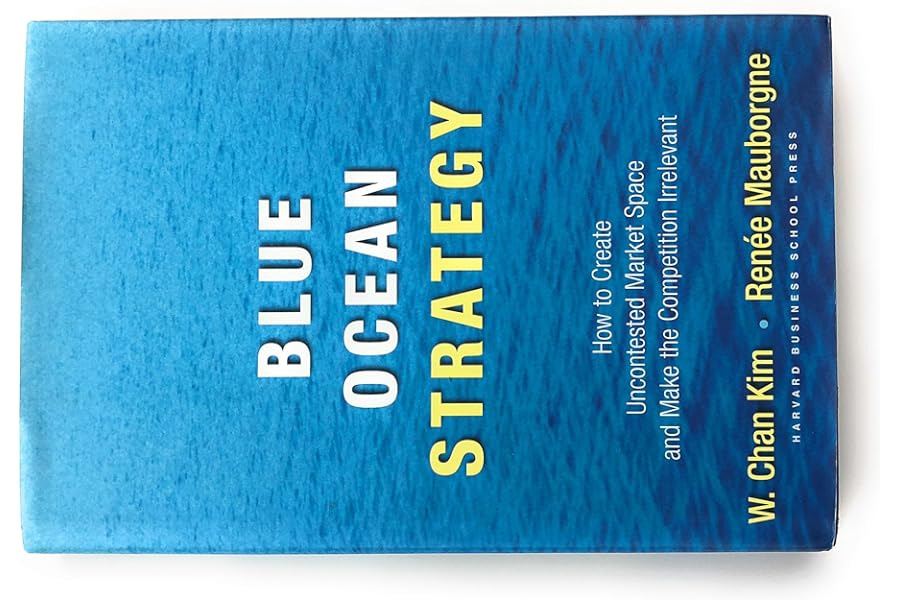One sentence summary:
Blue Ocean Strategy is a groundbreaking and comprehensive guide on how to create new market space and leave competition behind.
Book genre:
Business strategy and management.
Main topic of the book:
The main focus of the book is on how companies can shift from competing in bloody “red oceans” (overcrowded market spaces) to creating and dominating uncontested “blue oceans” (new market spaces).
Key ideas:
- The need for companies to break away from the traditional mindset of fierce competition and instead focus on creating new demand and value.
- The importance of identifying and tapping into unmet customer needs and creating entirely new market opportunities.
- The benefits and potential of blue ocean strategy, such as higher profit margins, long-term growth, and sustainable success.
- A step-by-step framework for implementing blue ocean strategy, including the creation of a strategy canvas, the elimination of industry norms, the pursuit of differentiation and low cost, and the importance of execution.
- Real-life examples and case studies of companies that have successfully implemented blue ocean strategy, such as Cirque du Soleil, Southwest Airlines, and Netflix.
Main parts of the book and a short summary:
- Part One: How to Create Blue Oceans – This section introduces the concept of blue ocean strategy, contrasting it with traditional red ocean strategy and highlighting the benefits of creating new market spaces.
- Part Two: Formulating Blue Ocean Strategy – This section provides a practical and detailed framework for formulating and implementing blue ocean strategy, including tools and techniques for identifying and capturing untapped market opportunities.
- Part Three: Executing Blue Ocean Strategy – In this section, the authors emphasize the importance of execution in making blue ocean strategy successful and outline the critical steps for effectively executing the strategy.
- Part Four: The Sustainability and Renewal of Blue Ocean Strategy – The final section discusses how to maintain and sustain a blue ocean strategy in the long term, including addressing potential roadblocks and ensuring continuous innovation and renewal.
Key takeaways:
- Blue ocean strategy offers a unique and untapped opportunity for companies to create new market space and leave competition behind.
- Identifying and tapping into unmet customer needs is key to creating new market opportunities.
- A successful blue ocean strategy involves a systematic approach and execution with a focus on differentiation and low cost.
- Real-life examples and case studies can provide valuable insights into implementing blue ocean strategy.
- Sustaining and continuously renewing a blue ocean strategy is crucial for long-term success.
Author’s background and qualifications:
W. Chan Kim is a renowned strategy theorist and co-author of several books on business strategy, including Blue Ocean Strategy and Blue Ocean Shift. He is also a professor at INSEAD, where he teaches strategy, international business, and entrepreneurship. Kim is widely recognized for his work on blue ocean strategy and has been named as one of the world’s top five most influential management thinkers by Thinkers50.
Target audience:
Blue Ocean Strategy is a valuable resource for entrepreneurs, business leaders, and managers looking to differentiate their companies and create new market opportunities. It is also suitable for anyone interested in understanding how successful companies have used blue ocean strategy to achieve sustainable growth and success.
Publisher and first publication date:
Harvard Business Review Press, January 2005.

